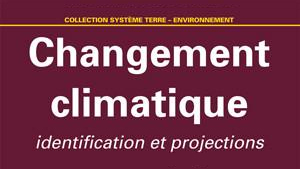I met this automation professor in the early 90’s before joining an industrial group in the energy sector, he was one of the leaders of the auto-adaptive research group. He carried a very realistic vision, and was not a fast-talking person but a careful one.
“This approach seems interesting”
This approach seems interesting to me. Climatologists’ models are knowledge-based, and we know how hard they are to establish and how fast they diverge for unstable systems or even how they are sensitive to initial conditions. It is also pretty tough to be sure we took into account every needed piece of information with complex systems. That is where my doubts about IPCC’s conclusions lie, even before reading Philippe de Larminat’s book. To approach modelling with a behavioral model, obtained with identification methods for automatic control, seems interesting. Not necessarily more credible, since the predictable difference on future evolutions that we cannot estimate (due to volcanic activity, solar activity…) still exists, however the study remains complementary to knowledge-based model approaches.
“I finished reading this book. Outstanding.”
I finished reading this book. Outstanding. I would strongly recommend reading it; some chapters are advanced for me (I have lost a lot when it comes to theory), but as I know the background I made it through; the author himself warns his readers that some chapters can be skipped. Anyway, he puts at everybody’s disposal, including IPCC, his models and documents, and would be glad to find critics.
With our automatic control methods and without assuming anything on climate change reasons, models developed by Professor de Larminat based on behavioral analysis fit better than IPCC’s models for temperatures observations made over the last few decades. Even better, these models bring to light that solar irradiance has a predominant effect on change, whereas IPCC’ studies voluntarily consider irradiance as a negligible factor (for no real scientific argument) and reduce its influence in models! These new models also highlight the low impact of industrial activities (all in all, not only CO2) on climate, contrary to IPCC. The study also shows that the data current available is not enough to initialize IPCC’s state variables correctly, particularly with oceans where thermohaline circulation had been measured only recently.
“[…] results […] reassure about the future for our descendants.”
Our black-box models based on automatic control techniques have few state variables, so they are easy to initialize at a given date to observe prediction. The author dissects IPCC reports; he noticed that IPCC’s contortions do not really explain the temperature bearing for 15 years: the bearing happened and was measured but no one predicted it. To the great surprise (and probably delight) of the author, his model with the adequate initial conditions actually anticipates the bearing.
Odd thing, according to what he says, nobody working at IPCC cares about identification methods (no references) even if those techniques have been mature for a long time now as we obviously know!
As far as I am concerned, I would have been unable to design such a model, but results comfort my opinion on the low anthropogenic impact. And provides reassurance as to the future for our descendants.
Patrice Delesalle, automatic control engineer, August 2015

